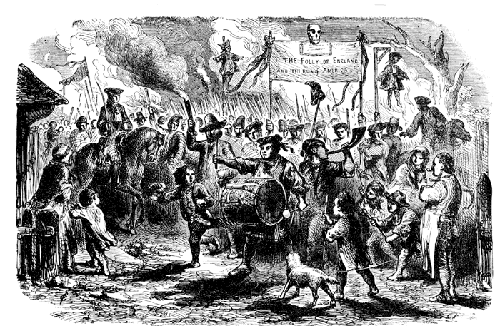As we approach the semiquincentennial (250th) anniversary of the forming of the United States, here is a brief summary of issues and actions that led to the Revolution and the Revolutionary War … this is about Taxes, Taxes, Taxes.
The French and Indian War was a clash of British, French and American Indian cultures. American Colonists were British citizens and fought side-by-side with the red coats.
The war started as a struggle for control of the land west of the Allegheny Mountains in the Ohio River Valley. (It was waged from 1754 to 1763.)
As the conflict spread, European powers began to fight throughout the world. It became a war fought on four continents: North America, Europe, Asia & Africa.
(The European portion of the war was called the Seven Years War.)
It ended with the removal of French power in North America.
The stage was set for the American Revolution. In a lot of respects, actions after the French and Indian war changed every-thing in the Colonies.
While the British won the war, it had been enormously expensive and left Great Britain with a heavy debt.
British government’s attempts to impose taxes on the Colonists to help cover those expenses resulted in increasing Colonial resentment.
The Colonists claimed they were equal to all other British citizens.
They felt they should be treated equally and argued that without representation in Parliament, Parliament could not tax them.
Parliament taxed and imposed import/export restrictions on the Colonies early and often (here are some):
Quartering Act (Mar. 24, 1765)
Declaratory Act (Mar. 18, 1766)
Intolerable Acts (Mar. 31, 1774)
Mounting tensions came to a head during the Battles of Lexington and Concord on April 19, 1775, when the “shot heard round the world” was fired.
It was not without warning; the Boston Massacre on March 5, 1770 and the Boston Tea Party on December 16, 1773 showed the increasing dissatisfaction with British rule in the Colonies.
The Declaration of Independence, issued on July 4, 1776 stated the reasons the Colonists felt com-pelled to break from the rule of King George III and parliament to start a new nation.
In September of that year, the Continental Congress declared the “United Colonies” of America to be the “United States of America.”
France joined the war on the side of the Colonists in 1778, helping the Continental Army conquer the British at the Battle of Yorktown in 1781.
The American Revolutionary War in North America lasted from April 19, 1775 (with the Battles of Lexington and Concord) to September 3, 1783 (with the signing of the Treaty of Paris.)
It lasted 8 years, 4 months, 2 weeks and 1 day; then, the sover-eignty of the United States was recognized roughly by what is now Canada to the north, Florida to the south, and the Mississippi River to the west.
The Peace of Paris is a collection of treaties ending the American Revolution and signed by representatives of Great Britain on one side and the United States, France, and Spain on the other.
Click the following link to a general summary about Taxes, Taxes, Taxes.

